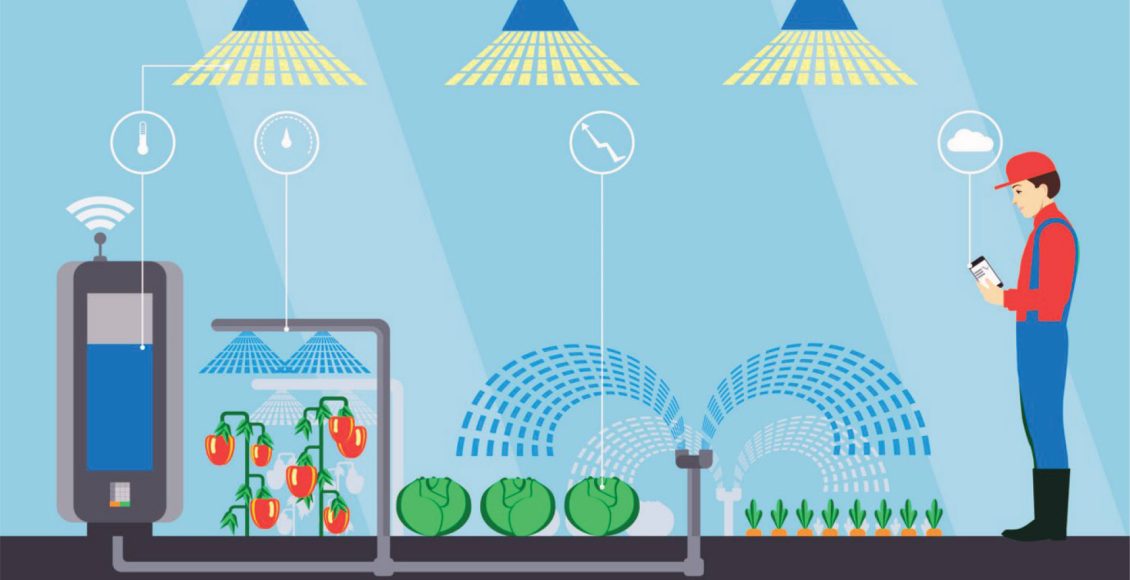
Flowing Forward: Enhancing Water Use Efficiency for a Sustainable and Resilient Future
Amidst the growth of the global population, which is projected to surpass 10 billion by 2050 and the now visible effects of climate change, the world is facing one of its most pressing challenges– ensuring food security while safeguarding limited natural resources. Agriculture, being the backbone of human sustenance, assumes a pivotal role in this endeavour. Among the diminishing resources for use in agriculture, water is the most critical one. As per an estimate, groundwater depletion has increased from 126 to 283 km3 per year[1], reducing its availability for agricultural use. A sustainable food production system is based on optimized water use efficiency in such a scenario.
This blog delves into the importance of water use efficiency in agriculture, its advantages, and the innovative practices that serve as the linchpin to a more sustainable future.
Understanding Water Use Efficiency
Water Use Efficiency (WUE) in agriculture pertains to the efficient use of water resources to enhance crop productivity while minimizing water wastage. Historically, agriculture has been marked by high water consumption, straining water sources and causing environmental degradation. At present, agriculture constitutes approximately 70% of total global freshwater consumption[2], on average. Nevertheless, the pursuit of sustainable agriculture has prompted the adoption of practices prioritizing the optimal utilization of every drop of water.
The Importance of Water Use Efficiency in Agriculture
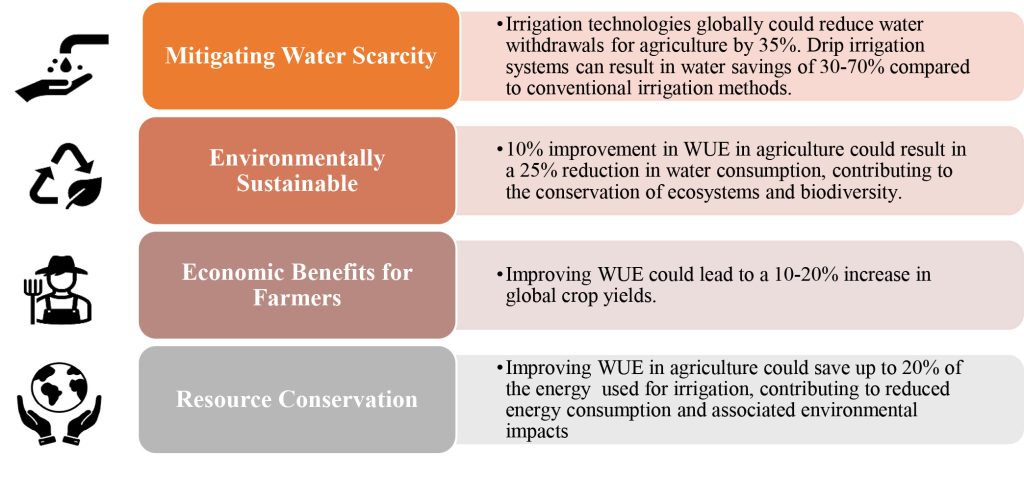
Well-known Strategies used for WUE
-
- Drip Irrigation: The 1960s and 1970s witnessed the commercialization of drip irrigation technology, also known as trickle irrigation, particularly in arid regions. Israel, facing water scarcity, became a pioneer in the development and widespread adoption of drip irrigation systems. Companies like Netafim (Israel) and Jain Irrigation (India) became instrumental in popularizing and distributing these systems globally. Implementing a drip irrigation system in the cultivation of crops such as sugarcane, banana, okra, papaya, bitter gourd, and several others has the potential to conserve up to 60% of the water typically used. Drip Irrigation is 90% more efficient than other forms of irrigation. In India, Sikkim, Andhra Pradesh, Karnataka, and Maharashtra are the leading states implementing this technology.
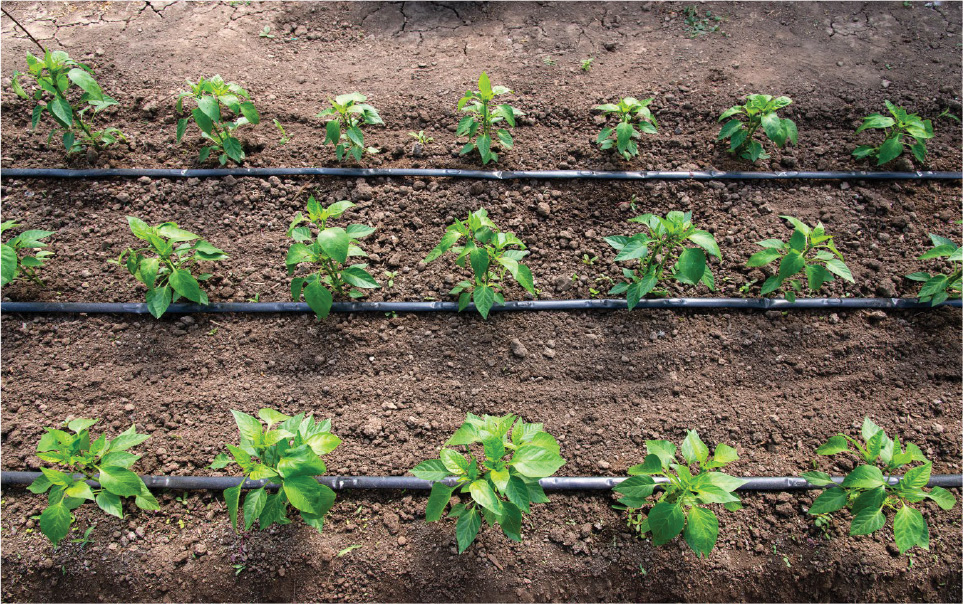 The PMKSY – Per Drop More Crop (PDMC), a flagship scheme by the Govt of India, encourages farmers to install drip and sprinkler irrigation systems. The scheme provides a subsidy of 55% to small and marginal farmers (land up to 1-2 acres) and 45% for other farmers (>2 acres) to promote the adoption of Drip and Sprinkler Irrigation systems. The scheme will help expand agricultural land coverage under efficient irrigation practices, reduce water wastage and enhance crop productivity. Over the years, technological advancements have refined drip irrigation systems. Today, precision farming technologies, automation, and sophisticated materials contribute to highly efficient and water-conserving drip irrigation practices.
The PMKSY – Per Drop More Crop (PDMC), a flagship scheme by the Govt of India, encourages farmers to install drip and sprinkler irrigation systems. The scheme provides a subsidy of 55% to small and marginal farmers (land up to 1-2 acres) and 45% for other farmers (>2 acres) to promote the adoption of Drip and Sprinkler Irrigation systems. The scheme will help expand agricultural land coverage under efficient irrigation practices, reduce water wastage and enhance crop productivity. Over the years, technological advancements have refined drip irrigation systems. Today, precision farming technologies, automation, and sophisticated materials contribute to highly efficient and water-conserving drip irrigation practices. - Smart Irrigation Systems: Leveraging technology, smart irrigation systems use sensors and data analytics to monitor soil moisture levels, weather conditions, and soil moisture content to adjust irrigation schedules, thereby reducing water wastage. About 40% more water could be saved than by using smart irrigation methods.In recent years, smart irrigation technologies have gained prominence globally, revolutionizing traditional agricultural practices. It is being practised in protected cultivation systems. Several companies use agricultural ICT platforms that integrate AI-based farming recommendations and automated irrigation control features designed for pulse drip irrigation by considering diverse factors like soil and climate variations, soil hydraulic properties, plant responses to water stress, and fluctuations in weather conditions. This holistic approach not only promotes water conservation but also contributes to increased agricultural yields by 20%. This prospect aligns seamlessly with India’s objectives for agricultural progress, fostering a landscape that is both technologically advanced and environmentally conscious.Soilless cultivation methods like aeroponics and hydroponics are highly efficient in optimizing water use by delivering water and nutrients directly to plant roots in a controlled environment. The plant growth rate is 30-50 percent higher than traditional farming methods, as crops in these systems receive optimal nutrients and experience reduced environmental stress. Hydroponics conserves 70-90% more water than soil-based cultivation by recirculating and reusing water. Beyond water efficiency, the crop yield increase in hydroponic systems is in the range of 3-10 times more. Aeroponic systems consume about 95% less water than conventional farming with a significant crop yield increase.
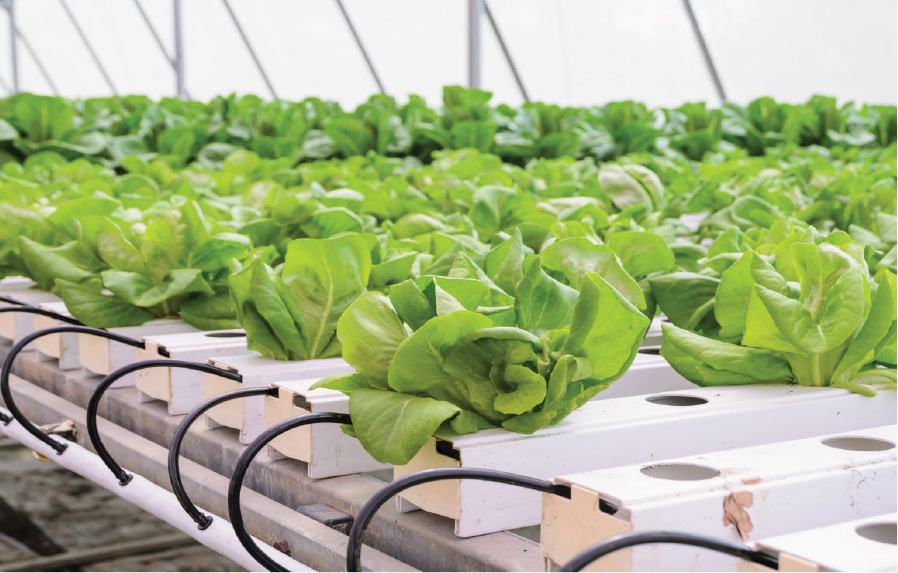 Adopting these innovative practices can significantly enhance water use efficiency in agriculture, contributing to sustainable and resilient farming systems.
Adopting these innovative practices can significantly enhance water use efficiency in agriculture, contributing to sustainable and resilient farming systems. - Drought-Tolerant Crops: Developing and planting crop varieties that are drought-resistant and water-efficient can contribute to sustainable water use in agriculture. The diverse spectrum of drought-tolerant hybrid/varieties in India extends across crops, including rice, wheat, maize, sorghum, pearl millet, barley, chickpea, groundnut, soybean, sugarcane, cotton, and jute. In 2021, the Prime Minister dedicated 35 new crop varieties to the nation, featuring multiple innovations like climate resilience and high nutrient content.
Drought tolerance Varieties/ Hybrids Rice Sahabhagi Dhan, Vandana, Anjali, Satyabhama, DRR Dhan 42 (IR64 Drt 1), DRR Dhan 43, Birsa Vikas Dhan 203, Birsa Vikas Dhan 111, Rajendra Bhagwati, Jaldi Dhan 6 Wheat PBW 527, HI 1531, HI 8627, HD 2888, HPW 349, PBW 644, WH 1080, HD 3043, PBW 396, K 9465, K 8962, MP 3288, HD 4672, NIAW 1415, HD 2987 Maize Pusa Hybrid Makka 1, HM 4, Pusa Hybrid Makka 5, DHM 121, Buland, Sorghum CSH 19 R, CSV 18, CSH 15R Pearl Millet HHB 67 improved, GHB 757, GHB 719, Dhanshakti, HHB 234, Mandor Bajra Composite 2, HHB-226, RHB-177, Pusa Composite 443, Barley RD 2660, K603 Chickpea Vijay, Vikas, RSG 14, RSG 888, ICCV 10, Pusa 362, Vijay, BGM 4005 Groundnut Ajaya, Girnar 1, TAG-24, Kadiri 6, Soybean NRC 7, JS 95-60 Sugarcane Co 98014 (Karan-1), Co 0239, Co 0118, Co 0238, Co 06927, Co 0403, Co 86032 Cotton HD 324, CICR-1, Raj DH 7, Jawahar Tapti, Pratap Kapi, Suraj, Surabhi, Veena, AK 235, Jute JBO 1 (Sudhangsu), JRO 204, JRO 524, JRC 80 Zucchini Black beauty Bell Pepper Revolution, Charleston Beans Common Bush, Cherokee Wax
- Drip Irrigation: The 1960s and 1970s witnessed the commercialization of drip irrigation technology, also known as trickle irrigation, particularly in arid regions. Israel, facing water scarcity, became a pioneer in the development and widespread adoption of drip irrigation systems. Companies like Netafim (Israel) and Jain Irrigation (India) became instrumental in popularizing and distributing these systems globally. Implementing a drip irrigation system in the cultivation of crops such as sugarcane, banana, okra, papaya, bitter gourd, and several others has the potential to conserve up to 60% of the water typically used. Drip Irrigation is 90% more efficient than other forms of irrigation. In India, Sikkim, Andhra Pradesh, Karnataka, and Maharashtra are the leading states implementing this technology.
- Improved Water Management: Proper water management practices, such as avoiding over-irrigation and regulating water distribution, can significantly enhance WUE on farms. Capturing and storing rainwater during the rainy season for agricultural use during dry seasons is an effective way to conserve water and minimize reliance on groundwater sources.
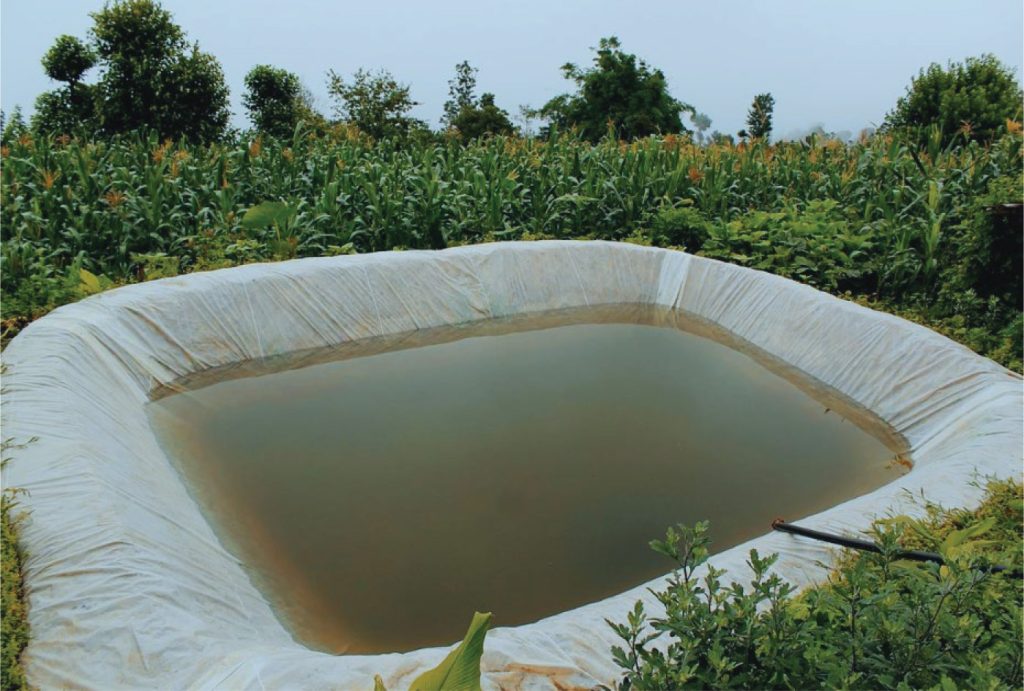
Future Outlook for Innovative Practices in WUE
The outlook for innovative practices in water use efficiency holds promising developments that can significantly contribute to sustainable agriculture.
- Remote sensing of water: This involves using satellites, drones, sensors, or other devices to monitor and measure water resources, such as surface water, groundwater, soil moisture, precipitation, evaporation, and water quality. It can help in water accounting, non-revenue water remediation, irrigation scheduling, flood and drought forecasting, and water allocation as per the priorities of local communities.
- Integration of Artificial Intelligence (AI): The incorporation of AI into precision agriculture and irrigation systems is anticipated to revolutionize decision-making processes. AI algorithms can analyze vast amounts of data, including weather patterns, soil conditions, and crop health, to optimize water usage with unparalleled precision to provide decision support for water use and other farming practices.
- Internet of Things (IoT): IoT refers to the network of physical objects embedded with sensors, software, or other technologies enabling them to communicate and exchange data. It can enable smart irrigation, water quality control, leak detection, water metering, and demand management.
- Water Banking and Trading Systems: Implementation of water banking and trading systems may become more widespread. This allows farmers to buy, sell, or trade water rights, promoting flexibility in water allocation and encouraging efficient water use practices.
The Role of Government and Stakeholders
The Agriculture Ministry is at the forefront of initiatives aimed at enhancing water use efficiency in farming. The Indian government is actively involved in shaping policies that not only incentivize water-efficient practices but also allocate resources to strengthen water infrastructure. Additionally, the ministry is dedicated to raising awareness within the agricultural community about the critical importance of adopting responsible water-use practices for long-term sustainability. Some of the initiatives that can be taken by the state and central governments in India are as follows:
- Financial Incentives and Funding: Provide financial incentives such as subsidies, grants, or tax benefits to farmers adopting water-efficient technologies and practices. This can offset the initial investment costs and encourage widespread adoption. Support should be provided to research institutions and agricultural universities in their R&D to develop innovative solutions that can enhance WUE.
- Data and Information Dissemination: Weather companies are aiding farmers by providing accurate and timely weather information, including forecasts, rainfall predictions, temperature trends, and other relevant meteorological data. This information will be crucial for farmers in making informed decisions about crop management, irrigation scheduling, and pest control. Establishing a system for collecting and disseminating data related to weather patterns, soil moisture, and crop water requirements will help farmers optimize farming practices and mitigate the impact of adverse weather conditions on crop yields.
- Water Rights and Allocation Policies: Developing transparent and fair water rights and allocation policies. Clear regulations on water usage can prevent over-extraction and ensure equitable distribution among farmers, promoting responsible water use.
- Collaboration and Partnerships: Fostering collaboration between government agencies, research institutions, non-governmental organizations (NGOs), and the private sector. Joint efforts can lead to comprehensive strategies and solutions for improving water use efficiency.
By actively engaging in these initiatives, the government can contribute significantly to improving WUE in agriculture, fostering sustainable practices, and ensuring the long-term resilience of the agricultural sector. Farmers and other stakeholders in agriculture can also make a difference by adopting water-efficient technologies.
Conclusion
WUE in agriculture is expected to undergo revolutionary changes in the future, propelled by new methods and developing technologies. It is expected that climate-resilient crop varieties and smart farming platforms will play pivotal roles bolstered by dynamic government initiatives, educational initiatives, and international research collaboration. As these methods proliferate, they promise to promote resilience and sustainability while also addressing the problems associated with water scarcity in agriculture. The resulting efficient use of water resources will contribute to increased agricultural productivity, reduced environmental impact, and enhanced economic sustainability. By aligning with consumer demands for sustainable practices, these innovations are poised to create a positive economic impact, reinforcing the importance of water use efficiency in driving a more resilient and prosperous agricultural sector.
[1] https://www.un-igrac.org/news/global-groundwater-depletion-leads-sea-level.
[2] Water in Agriculture (worldbank.org)
Authors


Connect with Authors at: E-mail agribusiness@sathguru.com
References
- Turner, N.C., Wright, G.C., Siddique, K.H.M. (2001), Improving Water Use Efficiency in Crop Production, Agronomy Journal.
- Alexandratos, N., Bruinsma, J. (2012), Water Use Efficiency and Productivity Trends in Agriculture. Water International.
- Wallender, W.W., Tanji, K.K. (2010), Water Use Efficiency in Agriculture: The Role of Precision Irrigation. Advances in Agronomy.
- Pereira, L.S., Oweis, T., Zairi, A. (2002), Water Use Efficiency in Agriculture: Measurement, Current Situation and Trends. Irrigation Science.
- Connor, D.J., Fereres, E. (2005), A Review of Water Use Efficiency in Irrigated Agriculture. Journal of Crop Production.
- Katerji, N., Mastrorilli, M., Rana, G. (2011), Enhancing Water Use Efficiency in Irrigated Agriculture. Agronomy for Sustainable Development.
- Raes, D., Steduto, P., Hsiao, T.C., Fereres, E. (2012), Assessing Water Use Efficiency in Intensive Agriculture. Irrigation Science.
- Singh, R.K., Malik, R.S., Singh, A.K., et al. (2017), Water Use Efficiency in Agriculture: Measurement, Management, and Policy. Irrigation and Drainage Systems Engineering.
- Thorburn, P.J., Biggs, J.S., Weier, K.L. (2003), Water Use Efficiency and Nitrate Leaching in Intensive Agriculture. Soil Research.
 Grow Beyond
Grow Beyond 

